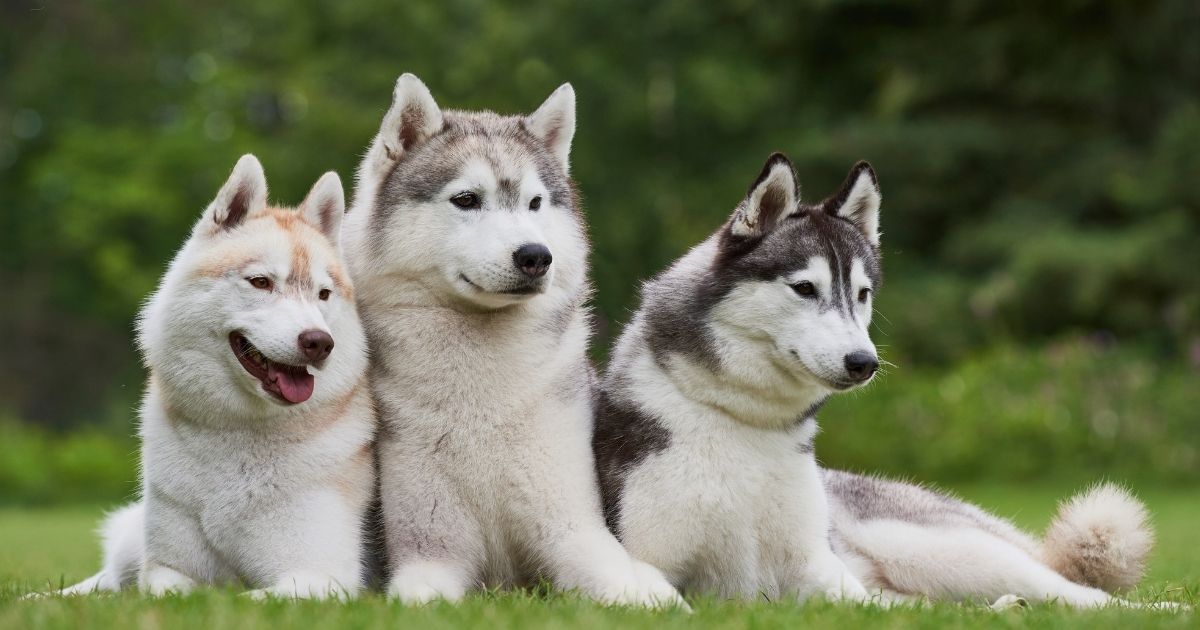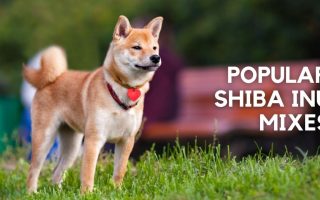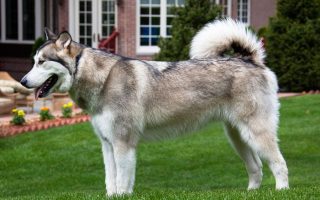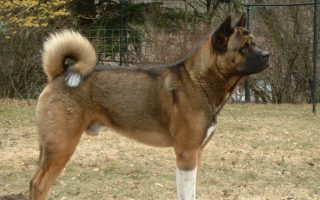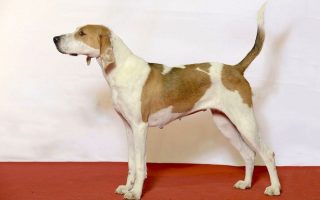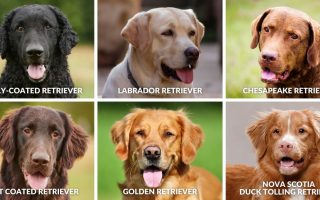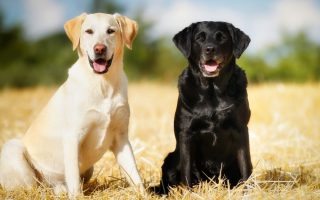The mention of the Husky dog breed takes our mind to the popularly known Siberian Husky breed.
Oh well, as adorably looking, agile, friendly as the Siberian Husky may be, it isn’t the only Husky breed in existence.
There are many different types of Huskies with amazing temperaments like the Alaskan Husky, Chinook, Agouti Husky, etc.
Interestingly, some of these Husky variants happen to have striking resemblances to the Siberian Husky.
Of all the types of Husky breeds, we’ve compiled about 20 of the most popular ones.
Without further delay, let’s get into more details.
The Different Types of Huskies
1. Siberian Husky
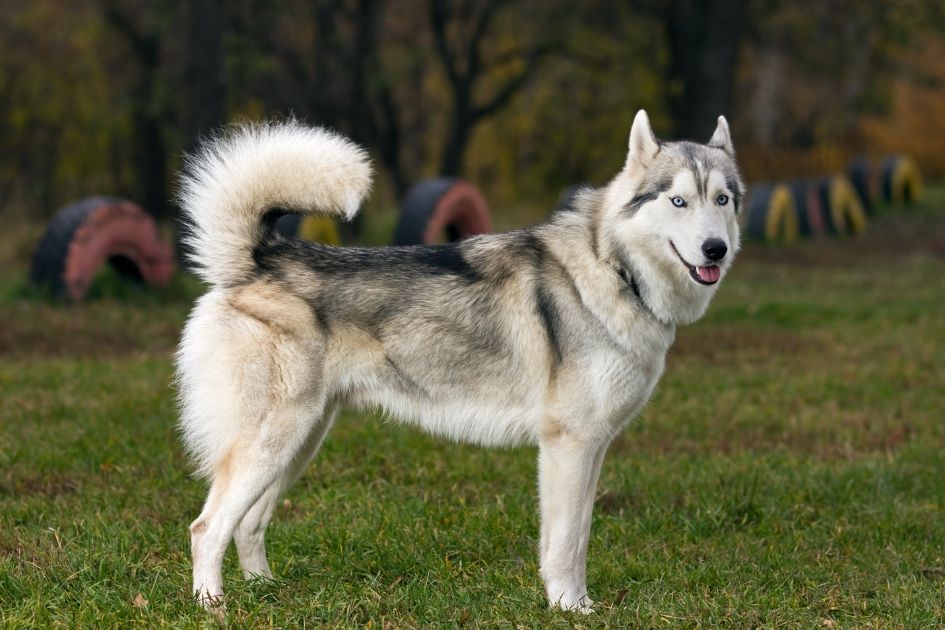
The most famous Husky breed, the Siberian Husky, is an average-sized dog with a double-layered coat that helps them withstand harsh weather, upright triangle-shaped ear with almond eyes.
Aside from being used as sled dogs, they have served as human companions.
Chukcha dog, as nicknamed, is agile, full of energy, and has a resilient attitude. They make great human companions and can be trusted around children.
The indigenous members of the Chukchi region permitted these pups to wander freely back then, enhancing their desire to have a high prey drive.
The breed is known to howl and dig a lot with a minimal tendency to bark.
2. Alaskan Malamute
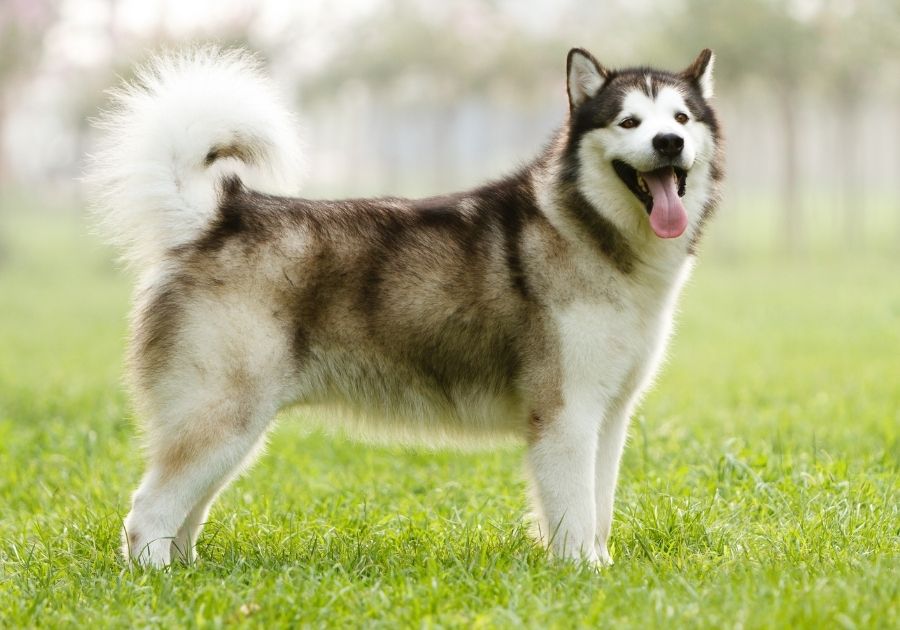
The Alaskan Malamute is classified as a relative to the Siberian Husky, with its history dated back to being one of the ancientest sled breeds.
It possesses a weight that exceeds that of the Siberian Husky. This breed weighs as much as 84pounds as an adult.
Their coat is double layered, helping them cope well with the cold weather that usually turns their nose pink for a while.
They have been recognized by the American Kennel Club since the year 1935 and are characterized as a gentle breed that is suitable for inexperienced owners.
However, they may require a large terrain while growing up.
3. American Eskimo Dog
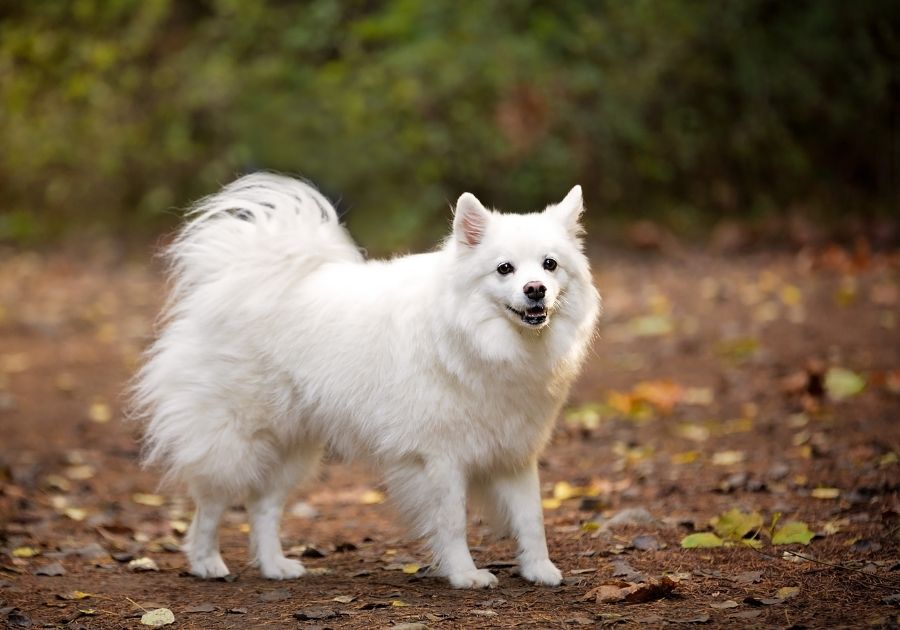
This breed with a German and American origin possesses long hair, a white coat, a dark nose, a small triangle-shaped ear, and is quite similar to other dogs of the Spitz group.
They exist as toys, miniature, and standard breeds.
They have over the years been adopted as companion pups after the popularity they earned as an entertainer after the first world war.
Eskies are social, cheerful and enjoy the company of their human companions and may even get attached to them.
This breed is famous and loved around the world. The American Eskimo Dog has been recognized by the American Kennel Club.
4. American Klee Kai
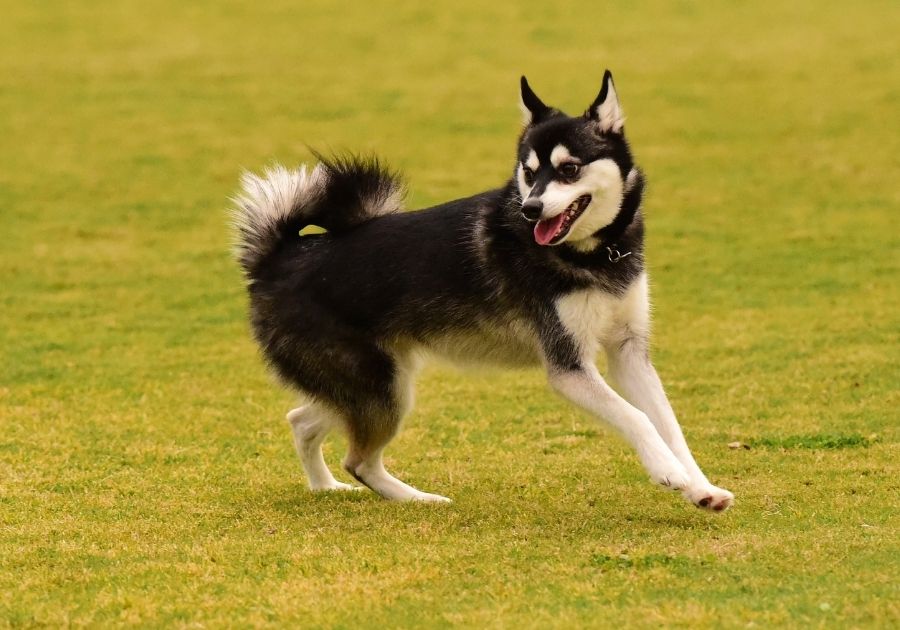
The American Klee Kai happens to be a smaller version of the Siberian Husky that comes in a toy, miniature, and standard variant.
This pure breed was initially developed by Linda Spurlin around the late 1900s and has been recognized by the United Kennel Club.
They are described to be intelligent breeds that can sometimes be aloof.
Their small size doesn’t make them less agile when it comes to sport. Klee kai breed is susceptible to cataracts, liver, and heart ailments.
However, the hereditary diseases of the breed are unknown as they haven’t existed long.
5. White Husky

While Huskies are a rare breed among the Husky dogs with an adorable physical appearance.
They feature a fluffy white coat, shiny eyes with a dark lining around them, an upright triangle ear, and a dark nose.
They have an appealing appearance and an active personality and may require a regular workout.
This breed is prone to shedding more than most other colored Huskies; hence one must be ready to brush their coat regularly.
6. Chinook
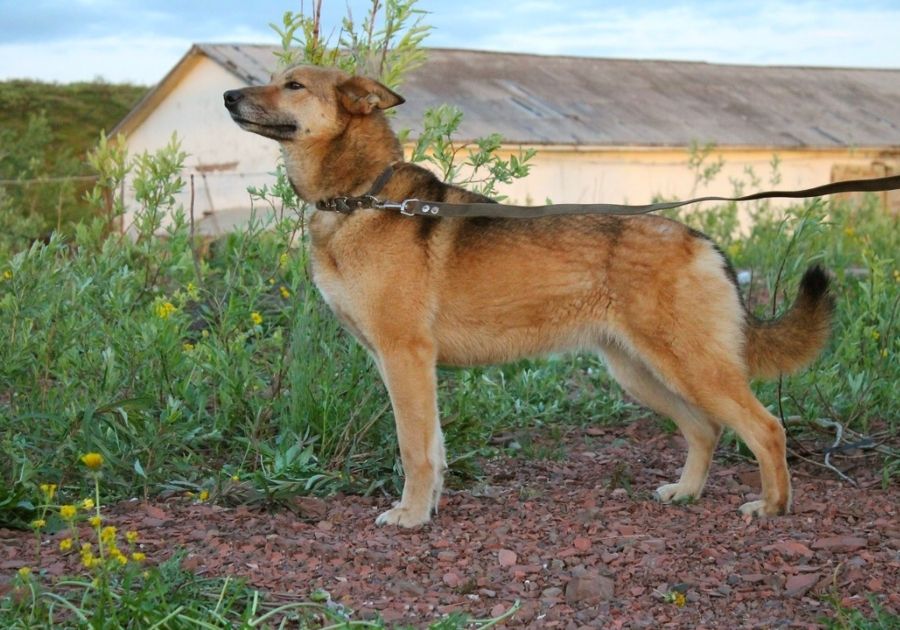
The Chinook is another sled pup developed in the 20th century. It has a size that can get up to 90 pounds with a height ranging between 21 to 27inches.
They have a hairy coat, athletic built, amber-colored eyes, with a pretty rectangular head.
The breed can adapt well to any kind of living, can easily be trained, and does well as a pack dog.
They are cheerful and enjoy devotion towards any work to be done to their human companion and kids.
The breed has been recognized by the United Kennel Club and is known to be quite vulnerable to genetic ailments like hip dysplasia, allergies, and epilepsy.
7. Alaskan Husky
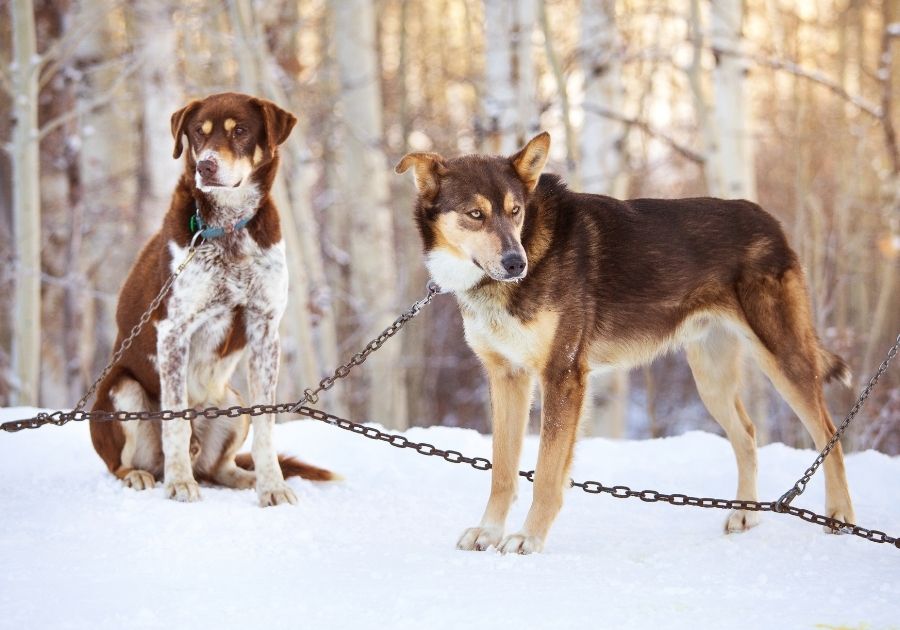
The medium-sized Alaskan Husky variant is yet to be recognized by any main Kennel Club.
Its temperament as an originally bred sled dog is defined by its ancestral background.
They have been the most generally utilized dog type for sled racing competitions.
Alaskan Husky was selectively bred to possess most of the desirable sled dog characteristics like its speed, intelligence, patience, and forbearance for harsh climate conditions.
They do not make a good household pet as that does not include the purpose for which they were bred.
However, they can do well as a sled racing companion.
8. Samoyed
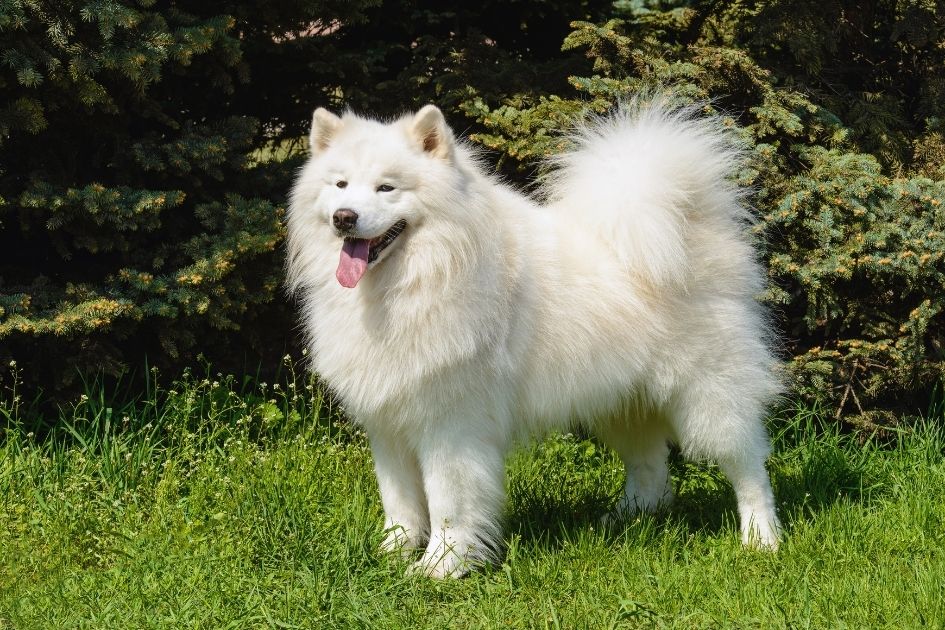
Samoyed is an average-sized dog similar to the White Husky with its fluffy dual layer coat and a small triangle-shaped ear.
They come in white color and weigh between 35 to 65pounds with a height ranging from 18 to 22inches.
Smileys are super friendly to the fault that they cannot be watchdogs as they may end up being friends with strangers, but they can send signals through barking.
Their cheerful attitude makes them get along well with kids, other dogs, and pets.
It is necessary always to indulge them in activities as they may display unpleasant attitudes when bored.
9. Agouti Husky

The Agouti Husky type appears as the exact opposite of the White Husky with their dark coat appearance and the fierce look of the wild wolf.
Agoutis are rare with their double-layer hair coat that can help them cope during harsh weather conditions.
They are average-sized pups that weigh up to 60 pounds as adults.
If you are one of those that admire the looks of a wolf, this breed may be the suitable domesticated version.
10. Labrador Husky
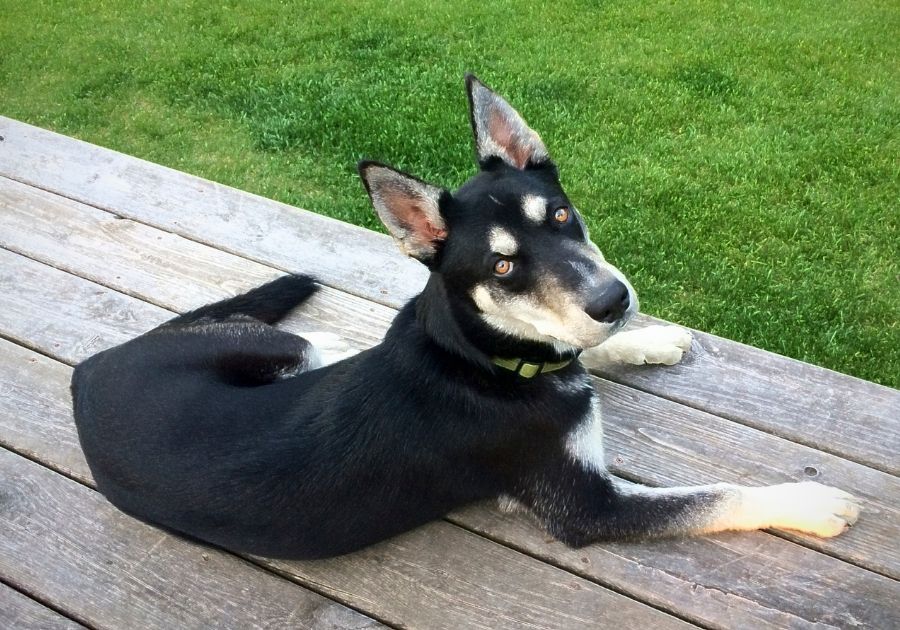
At first glance at the name of this breed, one may likely conclude that the Labrador Husky is the result of crossing a Labrador Retriever with a Siberian Husky.
Oh well, that cannot be farther from the truth because this breed, whose existence was recorded since the 1300s, is a purebred Husky variant located in Canada.
They do have a physical appearance like that of the Siberian Husky and a wolf which is said to be their predecessor.
Labrador Huskies can grow as large as 100 pounds, with a pointy ear, double-layered coat, and a shiny but strong built.
They require lots of exercise like running due to how active they are and enjoy attention from their human companion.
However, their coat may require more than an average grooming time.
11. Sakhalin Husky
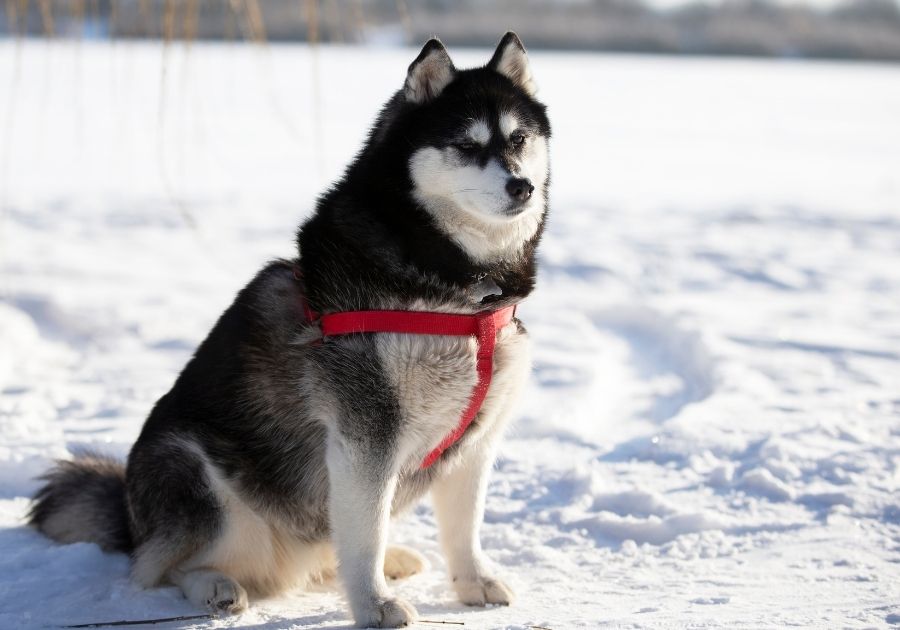
The Sakhalin Husky is rare, and only seven of them were recorded in the Sakhalin Island as of 2015.
This is because it is almost entirely extinct. Sakhalin Husky is speculated to be the ancestor of the long-haired Akita.
However, the breed was initially bred by Sergey Lyubykh, who died in 2012 after stating that there was a shortage of samples to enable continuous breeding.
It is almost impossible to find this breed.
12. Akita Inu
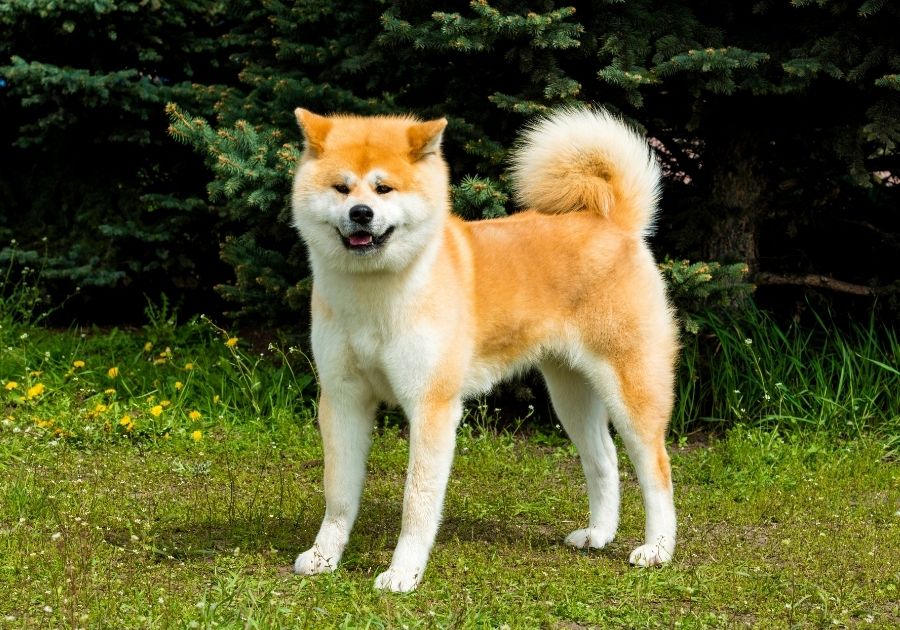
The Akita Inu is a large Japanese breed with an upright ear, double-thick coat.
They were once continuously crossed with the German Shepherd, Mastiff, and St Bernard dog breeds, which reduced their population in the 20th century.
Akitas were initially bred in a snowy mountain region in Japan as hunters of wild bears and boars.
The breed is adorable, affectionate, and a good family pup. They can act hostile around strangers, and they’re are quite dominant and territorial.
They may require early training and socialization to curb their aggressive nature towards other dogs and animals in general.
13. American Akita
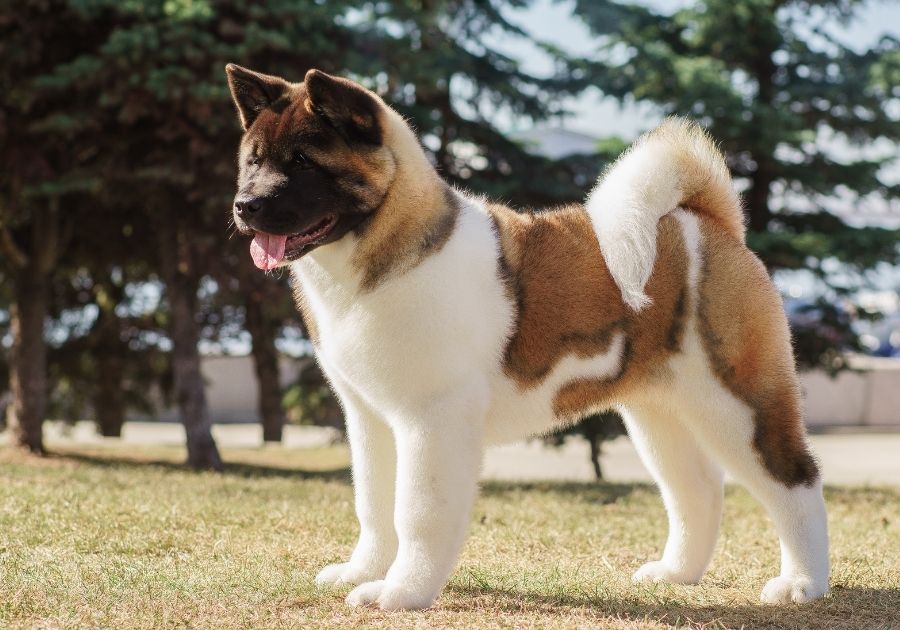
This breed is considered the American version of the Akita Inu.
However, they are similar in many aspects and are regarded as two different varieties of the same breed by the American Kennel Club.
They have larger and heavier bones and a head that is more like that of a bear.
This pup makes a good watchdog and would try to protect properties with much devotion.
However, they are pretty tough to train and may need an experienced hand or early training to make it easier.
14. Keeshond
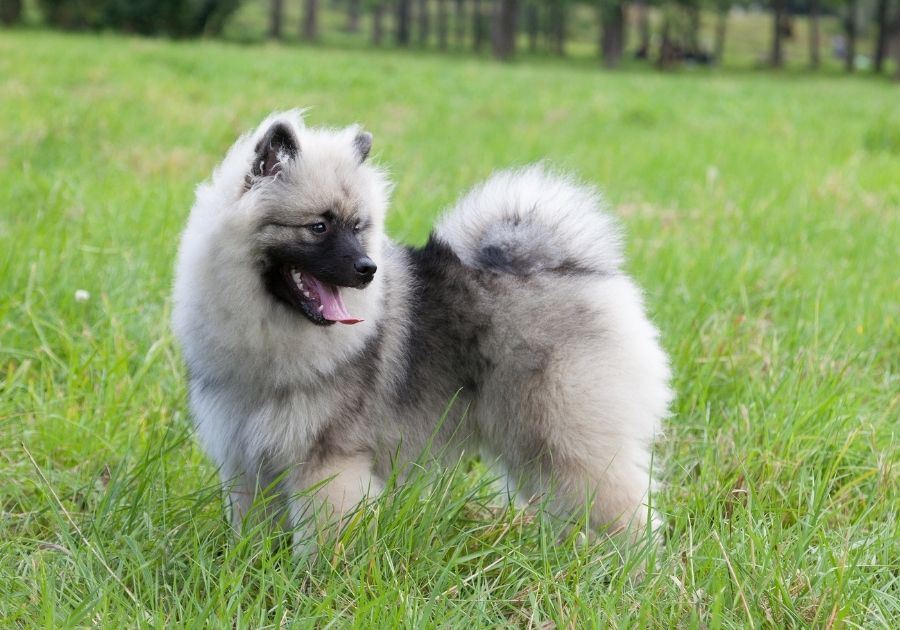
Kees are medium-sized long-coated pups of a Netherland origin.
They possess a small head, hostile facial expression, tiny upright ear, and a Husky-build.
The breed made it to being initially registered as a member of the American Kennel Club in 1930.
Keeshonds are really playful dog breeds. They catch up with things fast, including training and making great home companions.
Kees get along well with kids, other dogs, and pets and can become attached to their human companions, making them great empathetic pups.
15. Norwegian Elkhound

Elkhound is a Northern European Spitz-type breed that has been used for hunting, herding, protection, and as a watchdog.
They have been known to have excellent ability in carrying out these tasks and are courageous enough to track down wild animals like wolves and bears.
The breed has an upright ear, large head, fluffy double coat, and a lifespan of 14 to 16 years.
They may seem like tough dogs, but they show loyalty and are pretty attached to their owners; hence they can be great as a family dog if given the attention it needs.
16. Pomeranian Husky
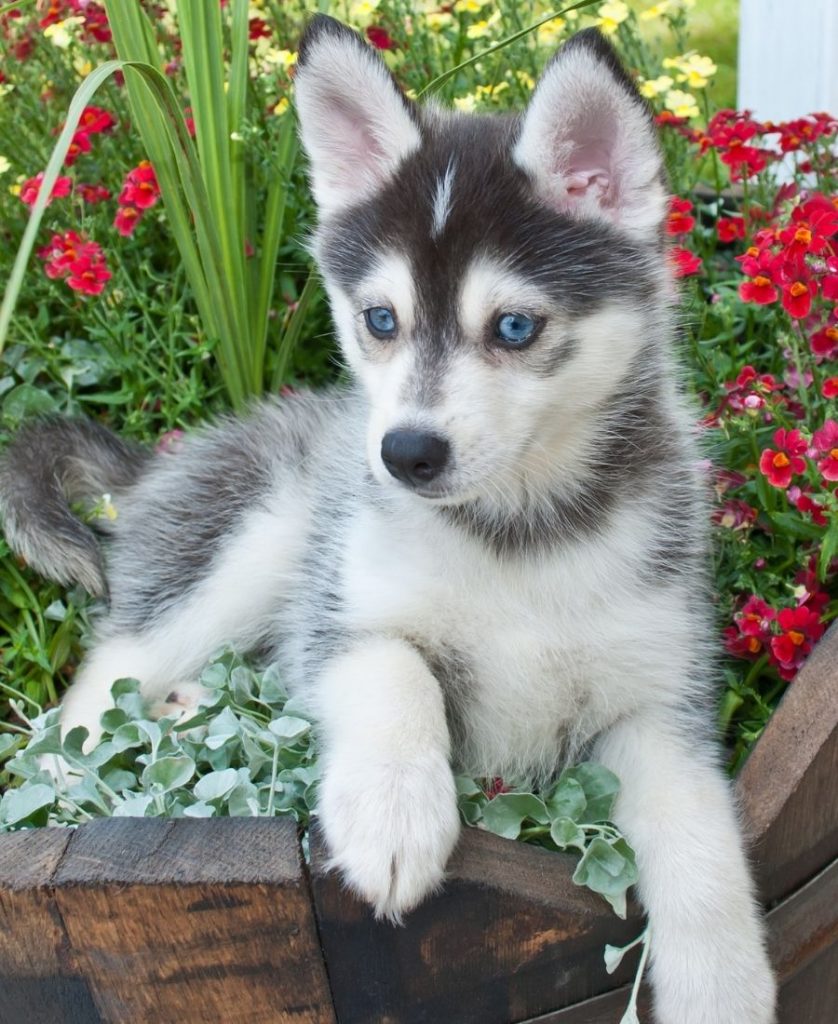
The Pomsky is a designer pup from the crossbreeding Siberian Husky and the well-known adorable small Pomeranian.
Although they are quite a new breed that came into existence in 2009, their beautiful appearance has made them almost as famous as their pure breed parents.
They are intelligent, cheerful, peaceful but can be hard-headed sometimes and may require early training from the puppy stage to be groomed into being a good family pup.
This breed is identified to shed a lot and would need to be brushed regularly.
17. Shepsky
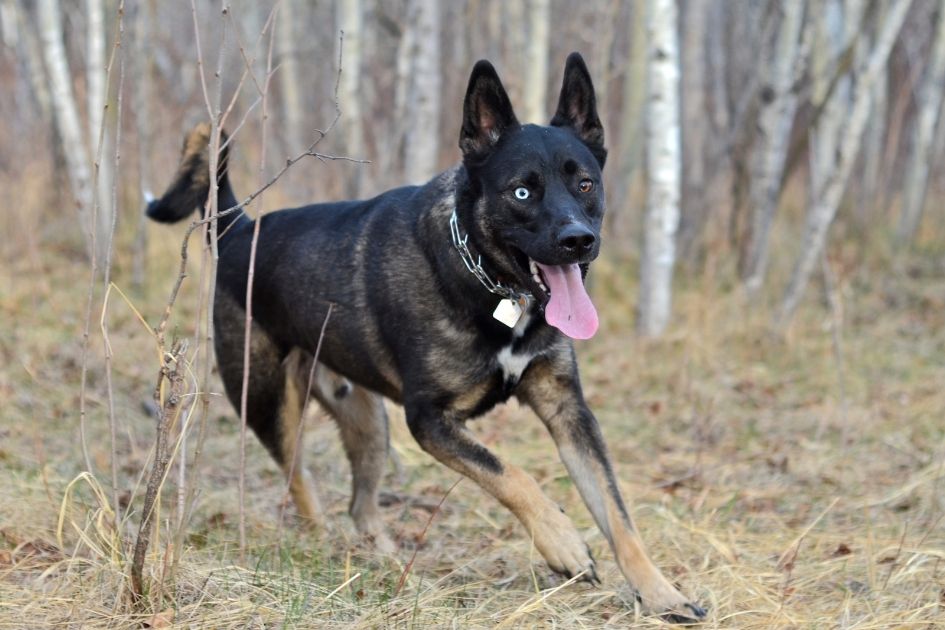
This is the resultant hybrid between the German Shepherd and the Siberian Husky.
Like most other crossbreeds, they are yet to be recognized by any leading kennel clubs.
As expected of a mixed breed dog, some may exhibit traits that indicate that the German Shepherd gene is more dominant, while others may act more like the Siberian Husky parent.
Nevertheless, the breed is a more than average shedder and may not be suitable for persons with allergies.
They are devoted, active, and need a large terrain with lots of workouts alongside mental exercise.
This breed can make a good family dog to experienced owners.
18. Utonagan
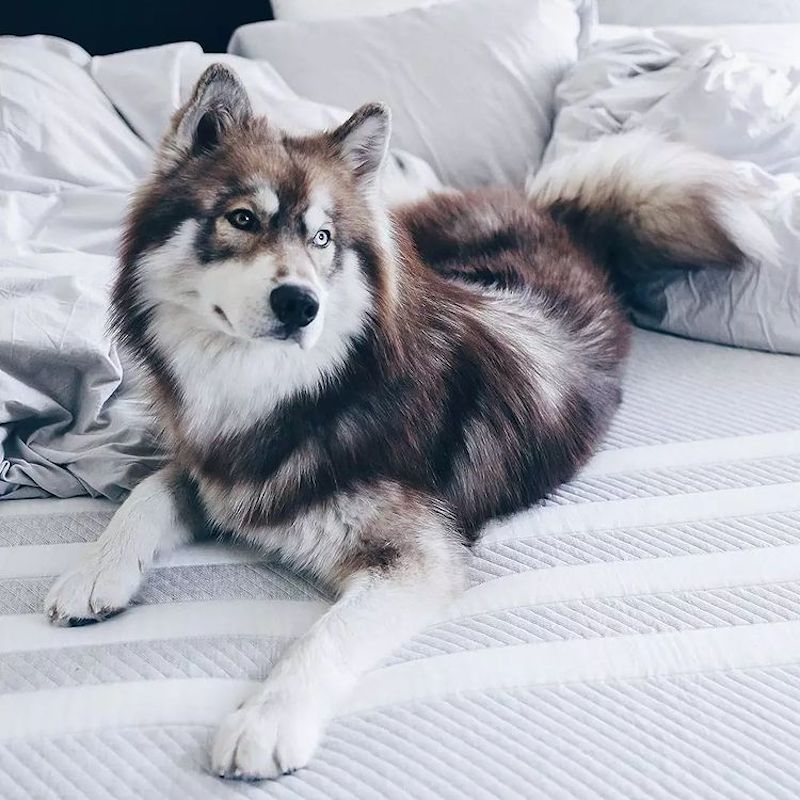
This breed is an outcome of crossing the German Shepherd, Siberian Husky, and the Alaskan Malamute. It was developed around 1980.
Although not yet recognized by any of the kennel clubs, this breed is speculated to have a balanced temperament and super high energy, just like its purebred parents.
They are known to be intelligent, friendly, and does well at assigned mental and physical task except for sledding and hunting as they were not developed for either of these functions and have not been used for them either.
A few of them are also expected to exhibit a more dominant trait from their predecessors.
19. Hug Dog
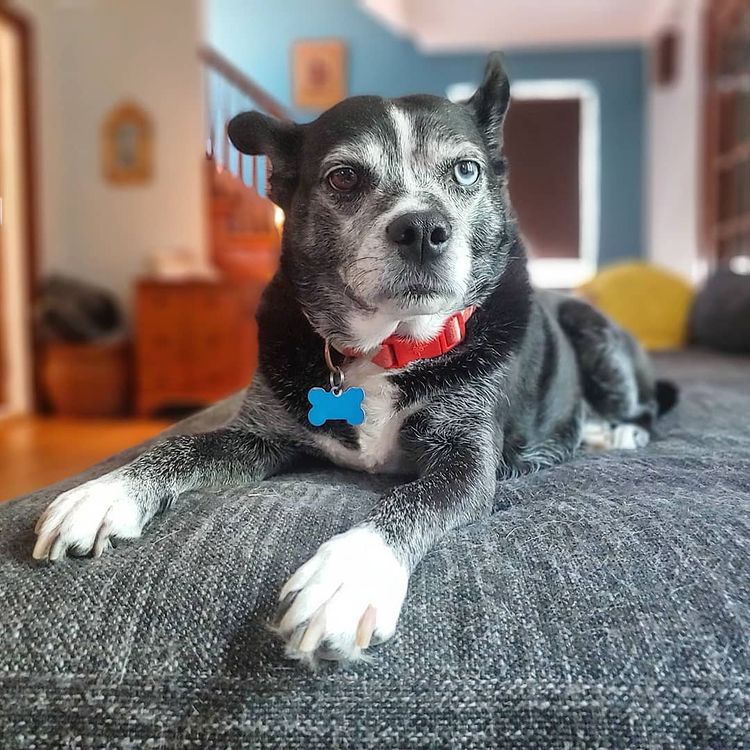
Hug Dog breed results from crossbreeding the Pug breed and the Siberian Husky.
Their appearance depends on who’s parent gene is more dominant, which may give a varied look between the different hug dogs, with some looking more like the Siberian Husky and others like the Pug.
This breed is expected to be intelligent and may love being active like the Siberian Husky or be somewhat lazy like the Pug with a less aggressive nature.
Hug dogs are well suited to be good house dogs and can be enhanced with early training.
20. Mackenzie River Husky
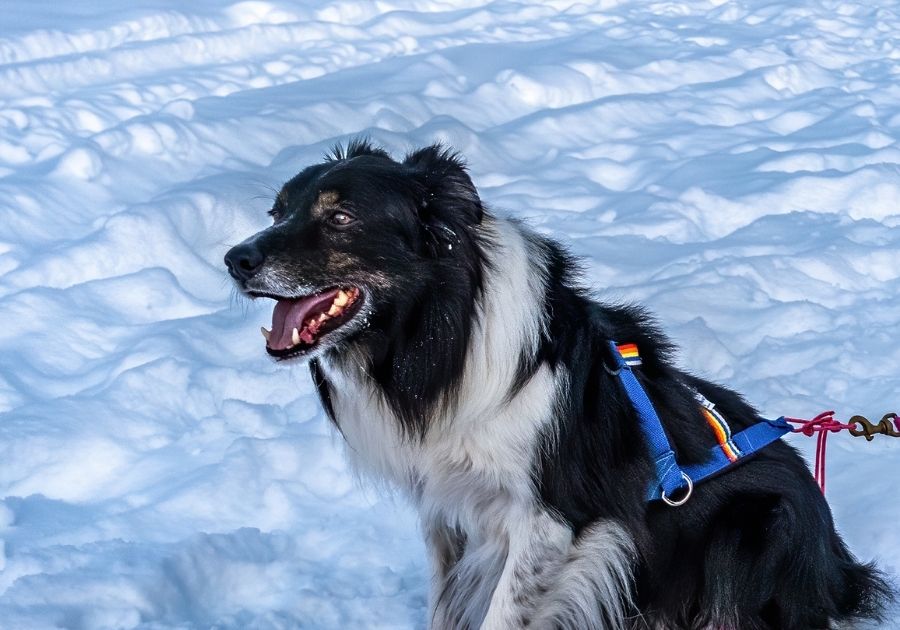
These types of Husky breeds found around the United States refer to a population of sled dogs with neither classified as a breed nor recognized by a kennel club.
They are usually large-sized with a weight estimated to reach 104 pounds and a height reaching 29 pounds.
Their coat colors range from black, white, tan, blonde to red.
The breed is not suited for inexperienced owners, although it can be enthusiastic, yet dominant.
They are closely related to the Siberian Husky but possess distinct features.
How many types of huskies are there
While the American Kennel Club recognizes only one Husky breed called known as the Siberian Husky, there are more than 20 other Northern breeds that are casually referred to as ‘Husky’ dogs.
Some of these Husky-looking dogs are purebreds while a few of them are crossbreed dogs.
What is the most beautiful Husky breed?
Many persons consider the Siberian Husky to be the most beautiful Husky breed, and for this reason, people have adopted them just for their appearance.
However, this breed is not recommended for owners with little or no experience with dogs due to their active nature.
Pomeranian Huskies are also seen as a cute designer Husky mix.
What is the rarest Husky breed?
Sakhalin Huskies are considered the rarest amongst all the known types of Huskies.
After being almost completely wiped out at some point, it has been computed that its total existing population does not exceed 50.
However, the exact number is not known. They are rarely being utilized for sledding now, so there are no hopes that the population would see a notable increase.
What two breeds make a Husky?
Siberian Huskies, typically a purebred Husky with the bloodline of some ancient Siberian breeds, can be mixed with other purebred dogs to give a Husky mix.
The Pomsky breed, for example, was gotten from mixing the Pomeranian and the Siberian Husky. Hug Dogs are a mixed breed of pugs and the Siberian Husky.
What is the most popular Husky?
Siberian Huskies are the most popular Husky breeds that have been in existence since the early 1900s.
Many persons have little knowledge about the other types of Huskies and assume the name “Husky” refers to the Siberian Husky only.
They have been spread around in various parts of the world with multiple recognitions like the American Kennel Club, Russian Kynological Federation, etc.
What is a red Husky?
Red Huskies are Husky variants with a reddish coat and a physical appearance like a wolf.
These medium-sized pups are pretty rare to find and are often called red Siberian Huskies.
What type of food do husky dogs eat?
In reality, Huskies tend to be picky eaters. Hence, they need enough nutrients in their diet to help them maintain their stamina, strength, speed, and other qualities that they are bred to have.
Learn more on the best dog food for Huskies and the feeding chart.
Wrap Up
If you are a lover of the Husky breed and would like to shake things a bit and explore, rather than settle for the Siberian Husky, you may want to choose from the other different types of Huskies on this list.
Many of these types of Husky dogs make excellent home pets, and their behaviors can be shaped with early training and socialization.
It is necessary to note that some of these variants may turn out quite expensive due to their rarity or fame.
But it would be worth the stress if gotten from a reputable breeder.
Here are some popular Husky Mixes you may like:
- Beaski: Beagle Husky Mix
- Dalusky: Dalmatian Husky Mix
- Great Pyrenees Husky Mix
- Chihuahua Husky Mix
- Buskdoggy: Husky Bulldog Mix
- Shiba Inu Husky Mix
References:
- The Siberian Times: Desperate effort to save Sakhalin Laika from extinction on its native island
- PetGuide: Labrador Husky Dog Breed
- AKC: Akita Dog Breed

